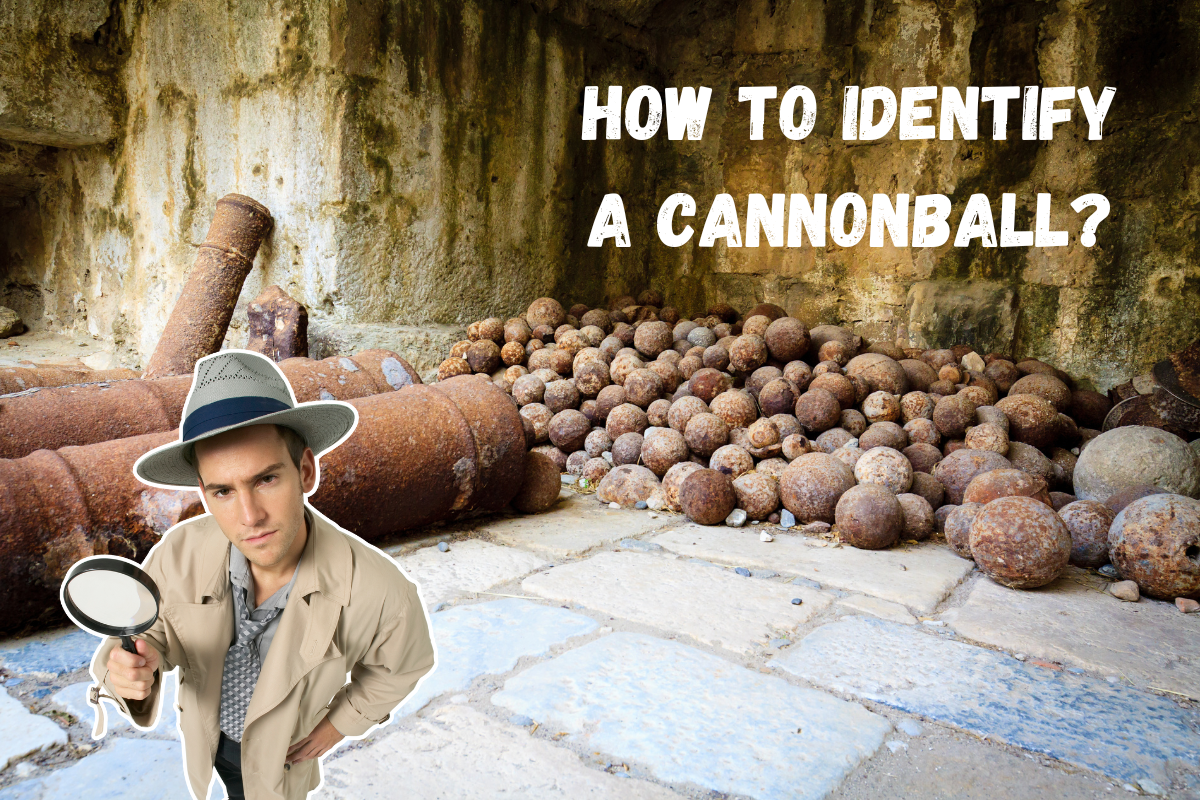A couple of weeks ago, a buddy was metal detecting an old farm near his house.
Long story short, he walked away with some old nails, a horseshoe, and some old coins that weren’t anything to write home about. But the prize of the day was a miniature anvil.
Luckily, the Hay-Budden marking was still visible, so learning more about these little anvil samples was easy.
Believe it or not, it’s not uncommon for us Diggers to find an old anvil underground. What is surprising is how few resources there are for identifying antique anvils.
After getting lost in a rabbit hole, we compiled a ton of information on nine antique anvil makers, hopefully sparing you the effort.
And here we are!
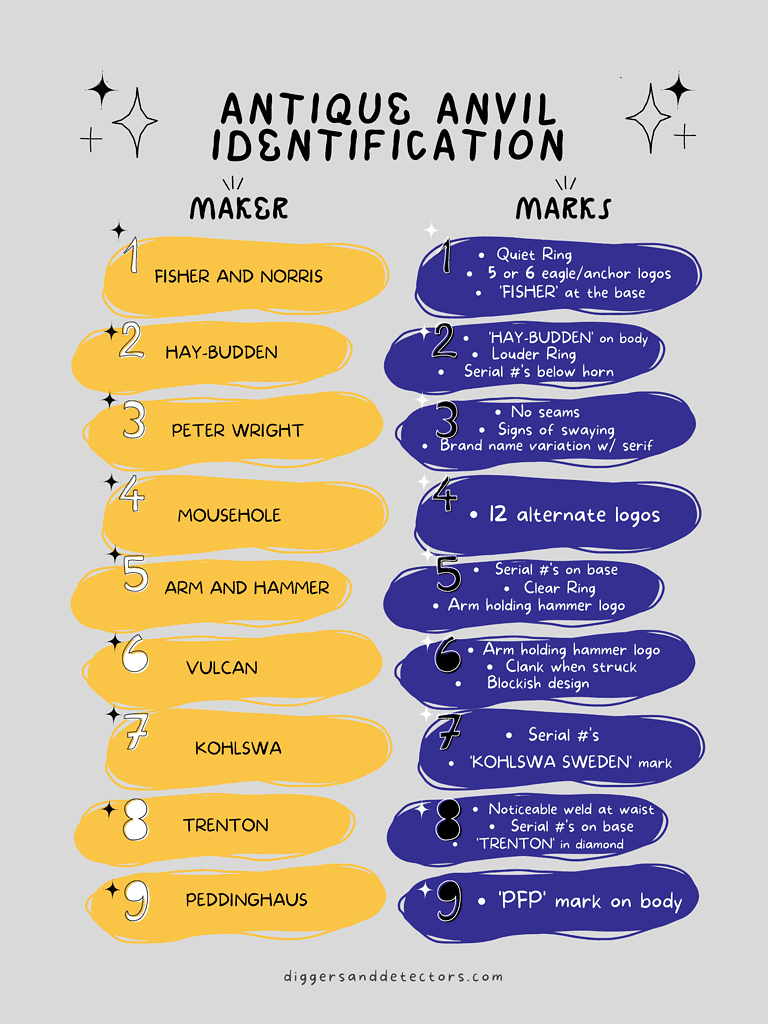
What Do the Markings on an Anvil Mean?
The markings on an anvil will tell you its history if you know how to read it.
You’ll generally come across four types of markings on most antique anvils.
- The makers’ mark or insignia
- A serial number
- The weight of the anvil
- Notches from testing the solidity of the shaped metal.
How Do You Identify an Antique Anvil?

To correctly identify an antique anvil, you must analyze the markings, shape, imperfections, the metal used, and unique characteristics to narrow down the anvil maker’s identity.
As I said, only a few resources are available to you.
Of course, a Google search will uncover several forums. But the two resources that hold the most value are anvilfire.com and a book called Anvils in America by Richard Postman, usually referred to as the AIA.
How to Tell the Age of an Anvil
Determining the age of an anvil can be difficult. But if the markings are legible, your chances are good.
In a perfect world, your anvil has a serial number either on the base or the body, which you can look up to identify its age by utilizing the AIA.
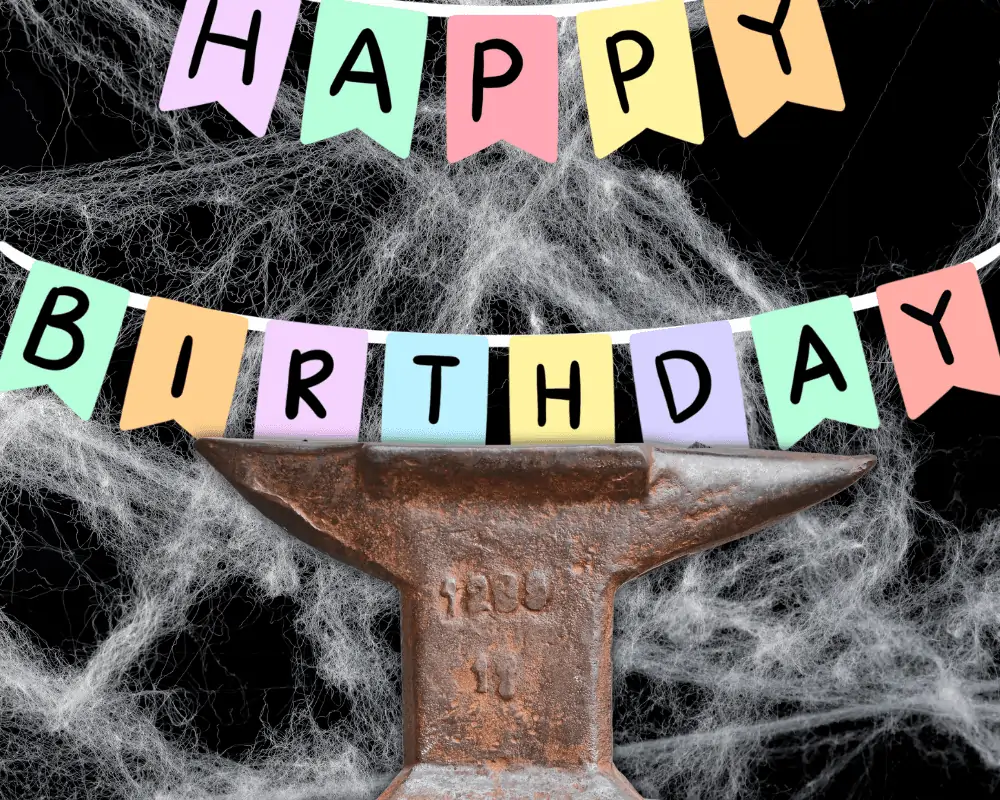
If you don’t have a copy of the AIA, posting the serial number on one of the forums is a good alternative.
Most enthusiasts have a copy of Anvils in America and will kindly look it up for you.
If the serial number can’t be found or read clearly, you can examine the anvil’s other features to narrow the age range.
But it won’t be exact.
For example, some antique anvil brands had different markers during different periods in time.
Other brands changed the metal they used or how the anvil was made when newer technology became available.
How to Tell if an Anvil is Cast or Forged
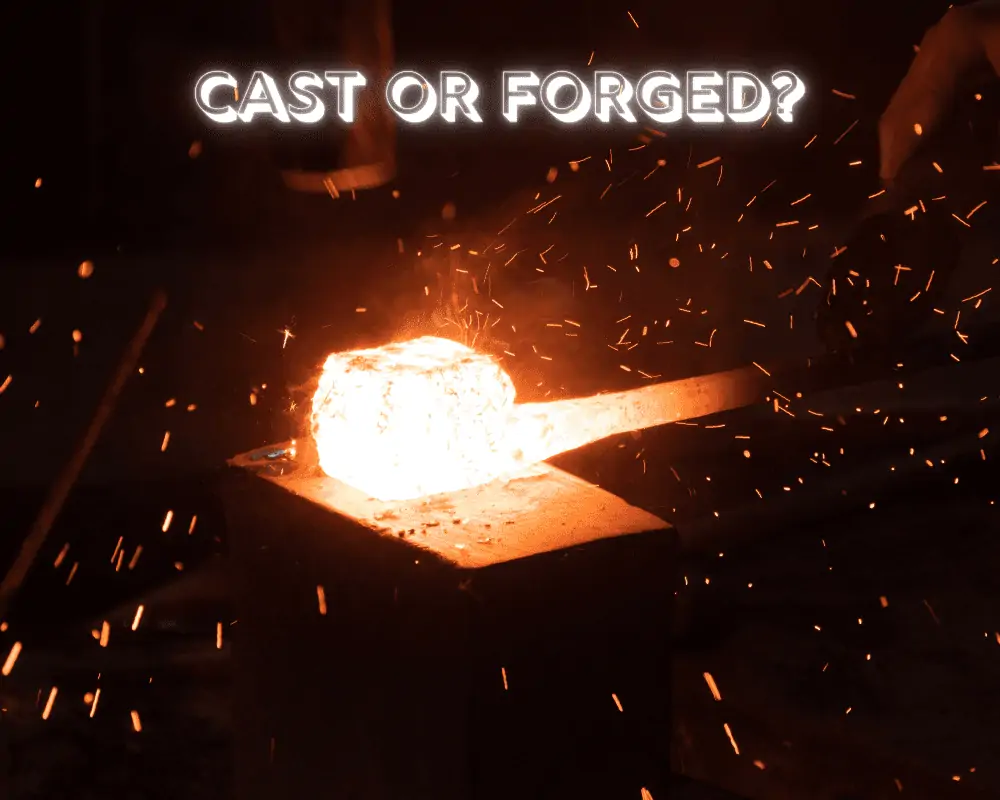
One of the simplest ways you can tell if an anvil is cast or forged is to look for a casting line or handling holes.
Casting lines will show as a seam from the bottom of the anvil to the top. Whereas forged anvils often have identifiable handling holes used during the forging process. Expect to see some wear and tear around the holes.
Another way to define which anvil-making process was used is to strike its face and listen for the sound.
A casted anvil doesn’t often emit a ringing when struck with a hammer.
Lastly, you could locate the anvil manufacturers’ mark as their chosen methods can give you the answer you need.
What Kind of Steel Are Old Anvils Made of?
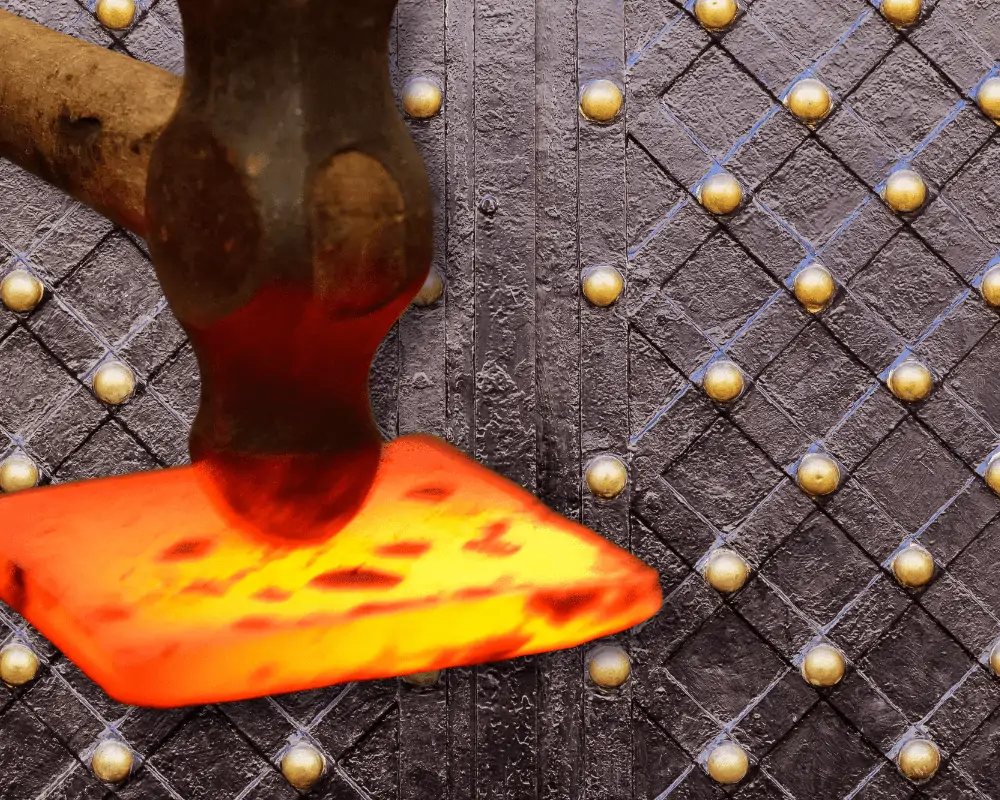
Each antique anvil brand used the metals they deemed best for performance and cost-effectiveness.
Early iterations of anvils used a wrought iron body and a steel plate for the face.
Mark Fisher of Fisher and Norris patented an anvil-making process incorporating a tool steel plate.
Tool steel is a carbon alloy steel best suited for manufacturing and tool making.
Today, most anvils are constructed chiefly of cast steel.
Antique Anvil Brands

It would take too long to detail every type or brand of an anvil and how to identify them. Instead, I detailed nine of the more popular antique anvil makers.
With any luck, you’ll be able to use that to identify your own anvil.
Fisher and Norris
Unique Identifiers:
- A logo consisting of an eagle, an anchor, or both
- Quiet when struck
- ‘Fisher’ name near the base
- A tool steel face plated to a cast iron body
Fisher and Norris formed in 1843 under Eagle Anvil Works, the first major American anvil company.
Mark Fisher established his company on the backbone of his patented plating process. Using tool steel on the face of their anvils, Fisher and Norris boasted a quieter and impenetrable exterior.
From 1843 through 1979, Fisher made many specialty anvils with necessary style variations. But these antique anvils will all share the recognizable Eagle Anvil Works mark.

Throughout the company’s history, there have been five or six iterations of the logo.
Most antique Fisher anvils found have an Eagle on the side. Sometimes it’s presented on an anchor; other times, you’ll see shives of wheat.
After the Civil War, anvils shipped to the south had no eagle, just the lone anchor.
And sometimes, the traditional eagle mark was replaced with the Fisher name.
Each mark deviation will give you a clue as to how old your Fisher anvil is.
I could spend a lot of time on Fisher anvils, but that’s not why you’re here.
Before moving on, here are more tidbits identifiers that may come in handy.
- The feet of Fisher anvils changed in 1877 from the London style to the Peter Wright style.
- Earlier Fisher models didn’t have bolting lugs. 1892 was their first reported usage.
- Fisher never used the English weight system. So any numeric markings for weight will be in pounds.
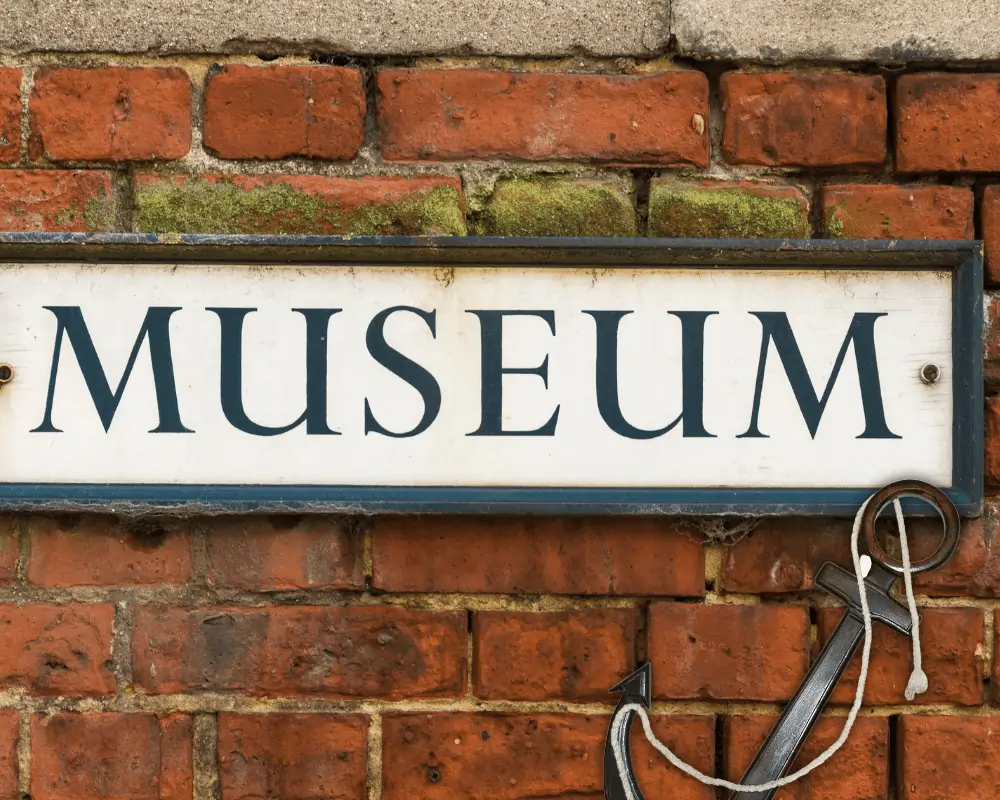
Lastly, if you think you have a Fisher anvil but need more certainty, reach out the Joshua Kavett at the Fisher and Norris Museum.
Hay-Budden
Unique Identifiers:
- Tool steel plate
- A louder ringing than Fisher anvils
- The Hay-Budden name found on their anvils
- Serial numbers on the base, beneath the horn
Hay-Budden was another famous anvil brand in early America. Their operations were based in Brooklyn, NY, from the 1880s until they went out of business in 1926.
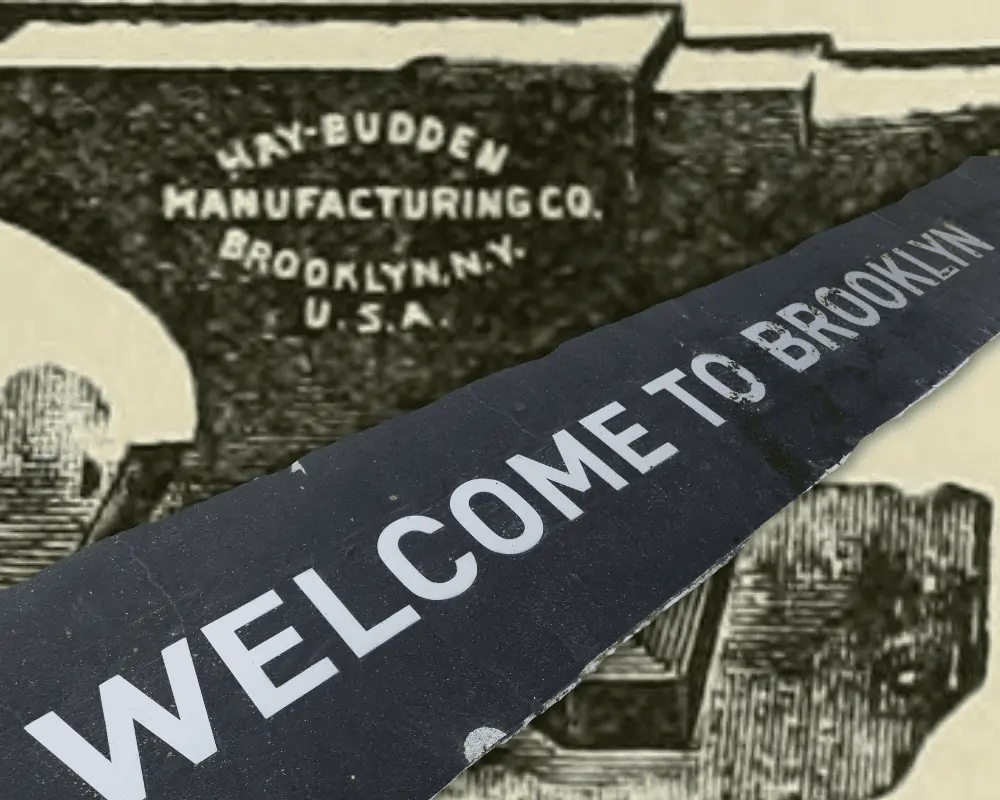
If you’re paying close attention to the characteristics of your anvil, you should notice that the antique Hay-Budden uses much less tool steel on the face than Fisher.
And when you strike it with a hammer, you’ll notice a much more audible ring than its American competitor.
Also, you might notice serial numbers on the base of the anvil. Again, using the AIA as a reference point is your best bet to determine if it is a Hay-Budden and what year the maker made it.
Peter Wright
Unique Identifiers:
- Forged anvil without any seams
- A variation of his name on the anvil with serif letters
- The wrought iron body shows signs of swaying
Peter Wright made the first solid anvil in 1852. Instead of the traditional casting process, Wright forged his anvil by turning it often while shaping it.
These anvils were made in the UK but were imported into the US regularly.
The original antique Peter Wright anvils are identifiable by his name or abbreviated initials on the body of the anvil.
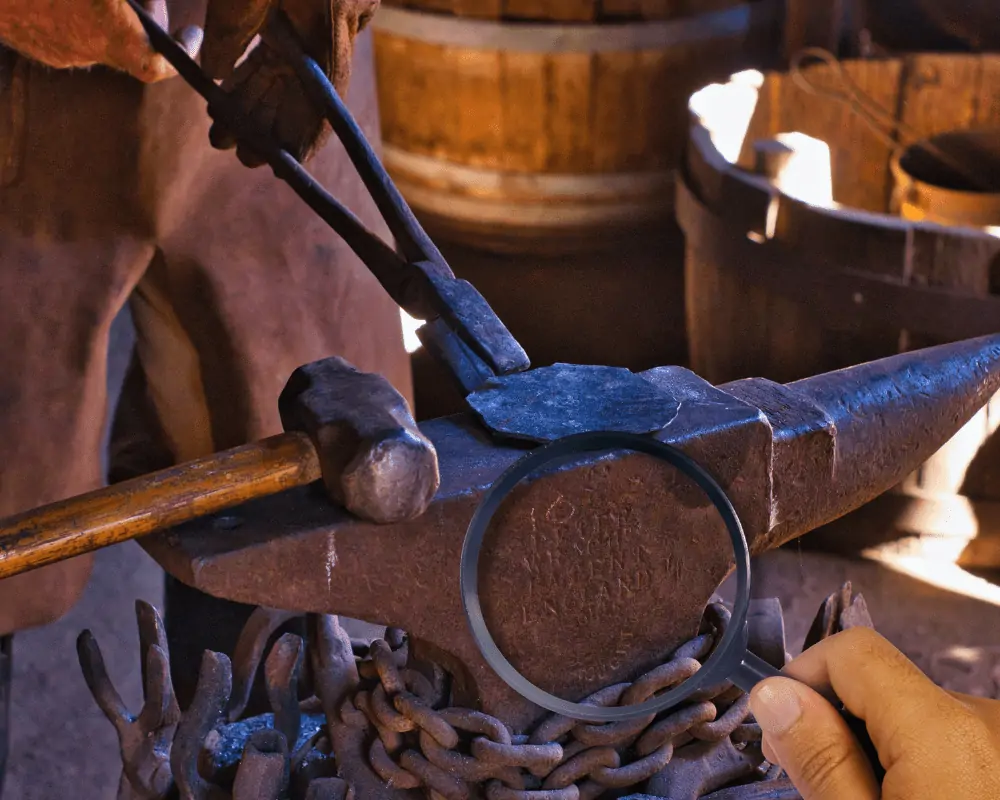
Specifically, the letter marking has a visible finishing line on each character. This kind of detail isn’t often found on other antique anvils.
Finally, the earliest Peter Wright anvils will show signs of swaying due to the wrought iron body. At the time, competitors used scrap metal and casting instead of higher-grade material.
Mousehole
Unique Identifiers:
- 12 alternate logos
Mousehole is one of the oldest anvil makers dating back to 1628 in Sheffield, England.
Despite its long history, Mousehole Forge only started incorporating pritchel holes in the 1830s.
But their most identifiable marking is their logo.
Like Fisher anvils, Mousehole changed its mark a minimum of twelve times in its history.
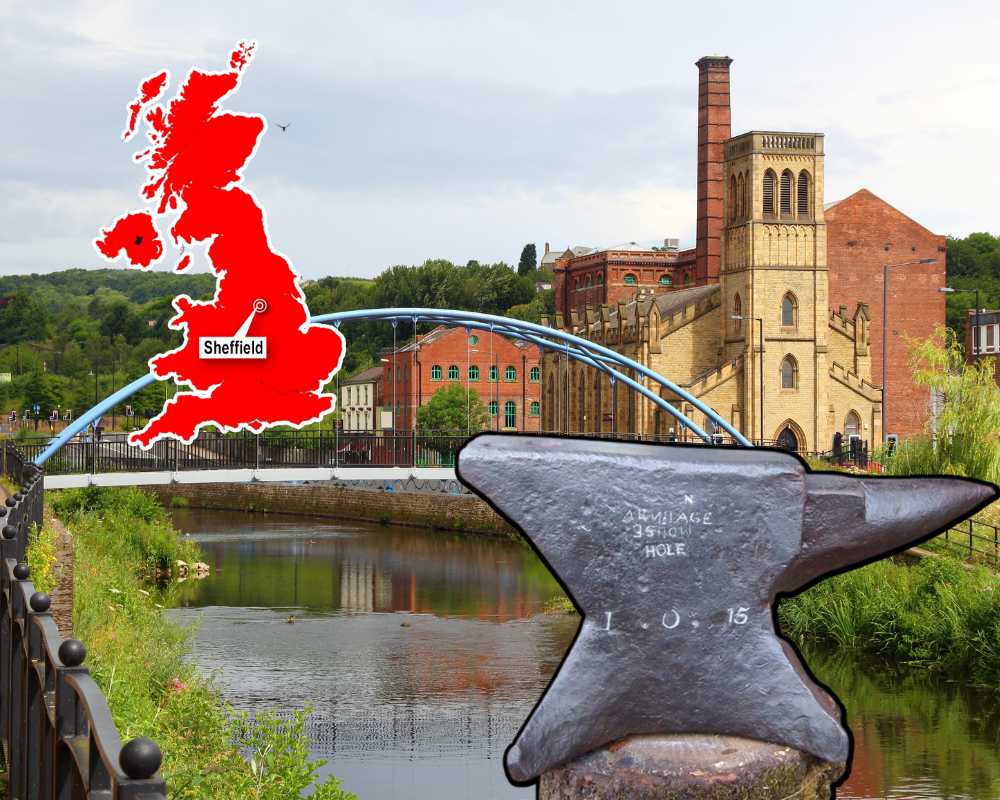
Some period anvils have markings with M&H Armitage Mouse Hole. Others depict a mouse followed by the word HOLE.
Arm and Hammer
Unique Identifier:
- A makers logo of an arm holding a hammer on the side of the anvil
- Serial numbers on the base
- Clear ringing when struck with a hammer
- Wrought iron body
Arm and Hammer anvils were made from 1900 until 1955 in Columbus, Ohio.
It’s suspected that the Columbus Anvil and Forging Company produced nearly 51,000 anvils in their 55 years of business.
Arm and Hammer made their anvils with a wrought iron body and an American-produced tool steel faceplate which produced an unmistakable ringing when struck.
The signature marking was an image of an arm holding a hammer.
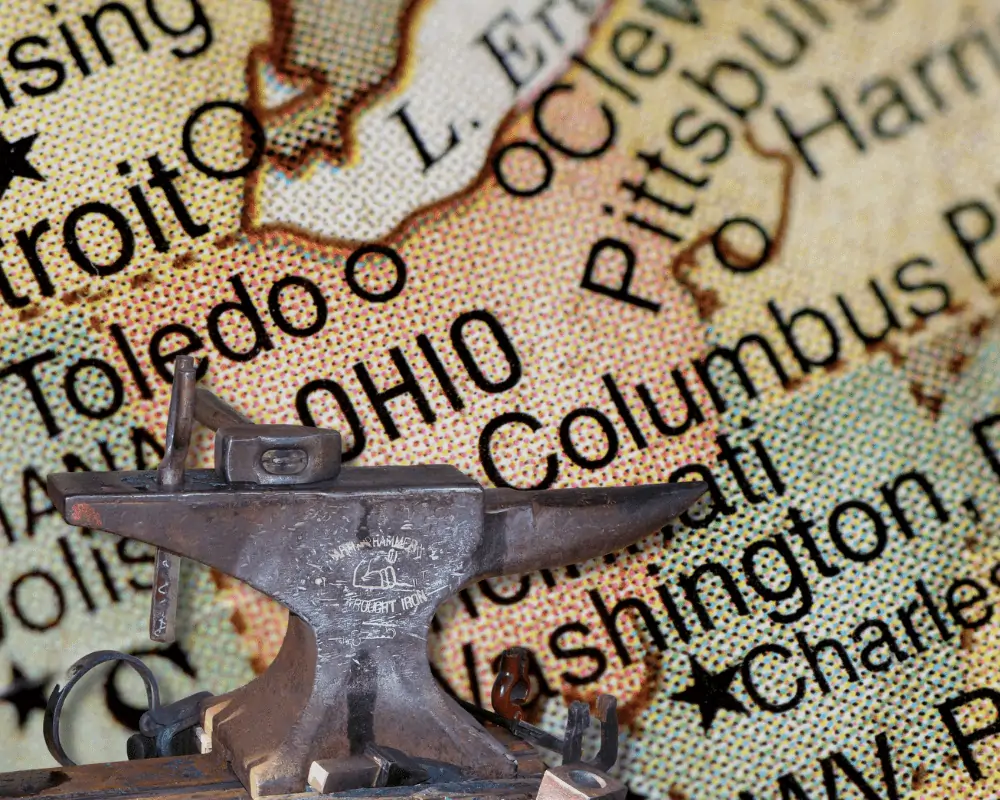
However, it’s often confused with the next antique anvil brand marking.
Also, you can usually find serial numbers at the base of the anvil, which holds further detail about its origin.
Vulcan
Unique Identifiers:
- A makers logo of an arm holding a hammer
- Quiet when struck
- Blockish design, unlike the London pattern
- Cast iron body
The Illinois Iron Bolt Company made Vulcan anvils from 1875 to 1969.
And while they share the similar Arm and Hammer logo, these two anvils are not the same!

In addition to their signature mark, Vulcan anvils are identifiable by their cast iron body and tool steel faceplate. But more importantly, when struck, they don’t produce the same resounding ring of an Arm and Hammer anvil.
It’s more like a clanking sound.
It’s important to note that Vulcan anvils were considered a cheaper version of alternative anvil brands at the time.
Kohlswa
Unique Identifiers:
- Serial numbers
- The company’s mark Kohlswa Sweden on the anvil
Kohlswa anvils are a storied Sweden product using the traditional London pattern.
These anvils were crafted with cast steel or, more precisely, a manganese alloy.
Because of this, their tendency to chip along the edge was well-known.

The two leading identifiable markers for Kohlswa anvils are the serial numbers and the words Kohlswa Sweden on the body.
Trenton
Unique Identifiers:
- The word Trenton inside a diamond-shaped border
- A noticeable arc weld at the waist post-1930s
- Weight markings in pounds
- Serial numbers found at the base
The Columbus Forge and Iron Company manufactured Trenton anvils from 1858 to 1952 in Ohio.

These anvils were first crafted with wrought iron top half and tool steel faceplates. But more recent anvils made use of forged steel.
Before the 1930s, Trenton’s were forge welded at the point. And later, arc welding was utilized, with a clear indicator located at the waist.
Another method to identify a Trenton anvil is to use the AIA and look up the serial numbers.
Peddinghaus
Unique Identifiers:
- Makers initials of PFP or Peddinghaus on the body
Peddinghaus is a German company that began making anvils in 1903 and was later liquefied in 1996, forming a new subsidiary manufacturer.
The most explicit identifier for the antique Peddinghaus anvils (pre-1996) is the PFP marking which stands for Paul Ferdinand Peddinghaus.
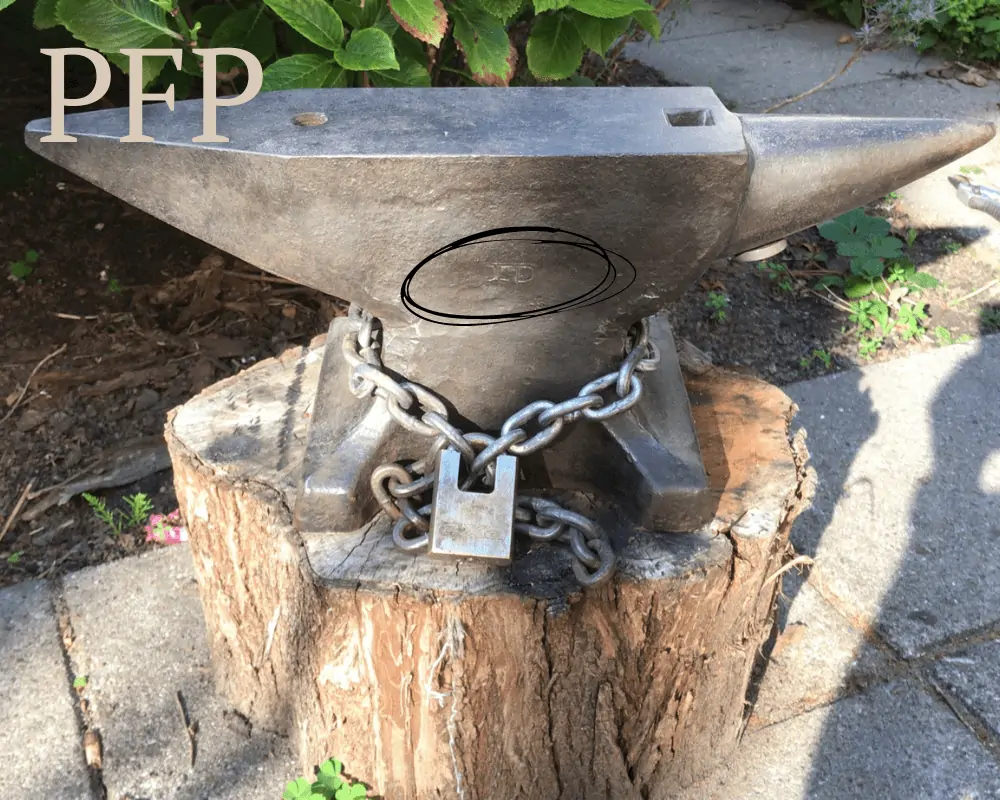
All newer Peddinghaus anvils use the updated marking of the word Peddinghaus.
How Do You Identify an Anvil With No Markings?
It’s easy to think the antique anvil you found has no markings.
The abuse that time and the elements inflict on these hulking metal blocks is common.
And most of the time, a little effort and elbow grease will uncover something hidden.
But you must focus on the other characteristics if there aren’t any markings.
- Examine the shape of the horn and feet.
- Try to determine the metal makeup of the anvil.
- Look for any seams, handling holes, or welding lines.
- Even the location of where you found it can help identify an anvil with no markings.
These identifiers can be used to research and match up similar anvil brands to give you a starting point.
But again, the first step should be grinding the surface with a wire brush to remove any corrosive build-up around the anvil.
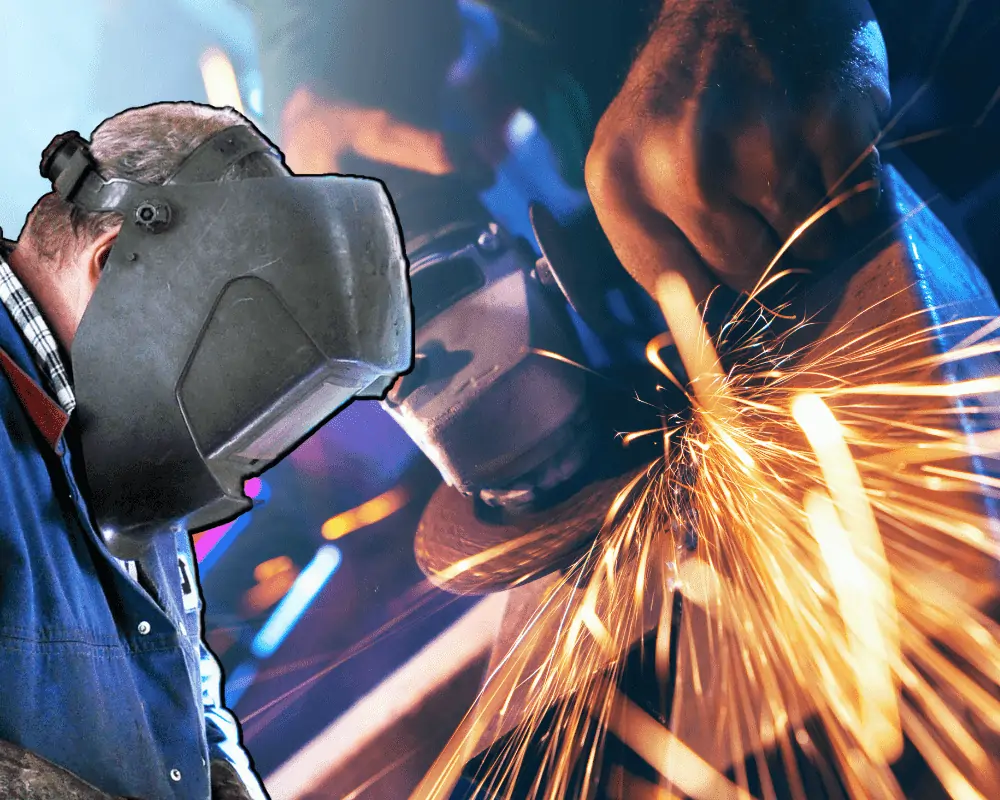
A quick clean-up can reveal hidden markings to help you identify the maker.
Good Luck!
I hope I gathered enough tips to shorten your antique anvil identification process.
I love metal detecting, and I’ve found my share of mysterious relics that require intense investigation.
And if you still need help figuring out what kind of anvil you have, the true experts, like the AIA or anvilfire.com, are the favorite authorities to try next.
Until next time.



